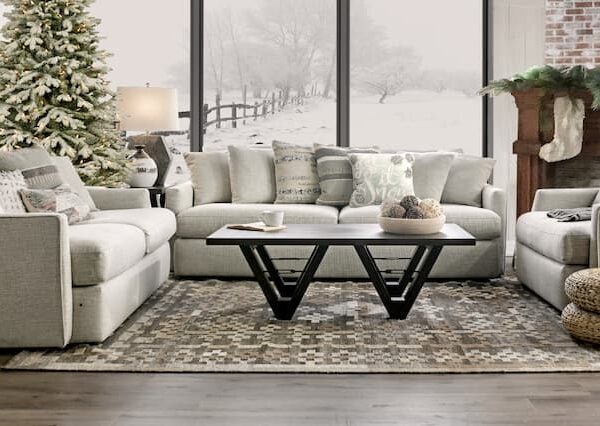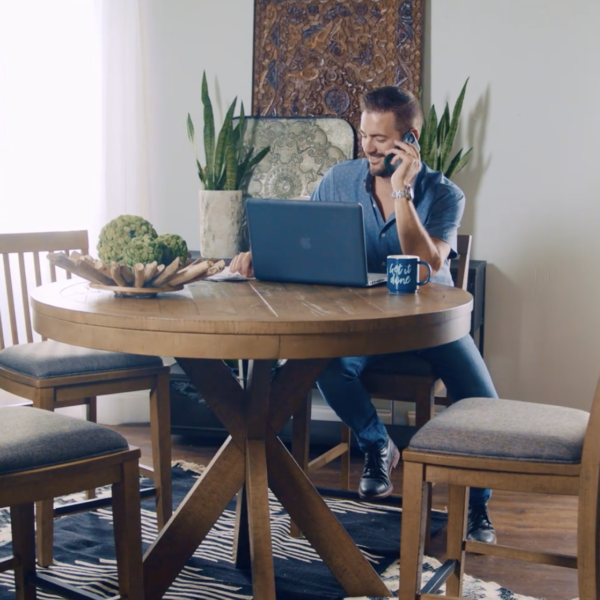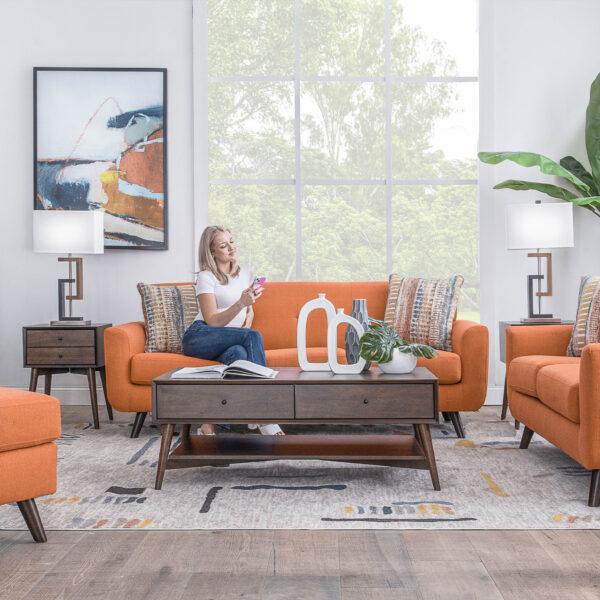One thing almost every interior designer agrees on is that you can never have too many accent tables! If you’ve ever paged through design magazines or Pinterest boards, you might have noticed an abundance of strategically placed tables that look effortlessly elegant beside the other furniture. Today, we reveal the secret of decorating with side tables: choosing something that catches the eye.
This approach will mean something different to everyone. For example, if your sofa and rug are neutral, you may want to adorn your living room with end tables that add some color. If you’re not a fan of colorful rooms, you could play with weight — choosing heavy, blocky designs that anchor lighter decor styles. No matter which table you choose, always go for something that speaks to your style.
Let’s explore some side, end, and coffee table ideas to get you started.

What’s the Difference Between a Side Table and an End Table?
When looking for a small table for your living room, you may be confronted with more than a few options. Most people use side tables and end tables interchangeably because they are very similar. The difference comes down to placement. End tables traditionally sit at the ends of your couches and are just big enough for a glass of water, a small lamp, and a TV remote.
Side tables, on the other hand, are slightly bigger and have more flexible placement options. Some people use them as oversized end tables, others place them along the walls in hallways, under mirrors, or near the edges of open-plan rooms. They are often paired with coffee tables or sofa tables to demarcate different activity zones in a large room.
Three Questions to Ask Before Buying an Accent Table
1. Decorative or Functional?
To start, determine where you want to place end tables and what function you want them to serve. What you want from a decorative side table in the kitchen probably differs from what you’d be looking for in a bedroom nightstand. The main thing to consider here is whether you want a side table with storage. Drawers and shelving can be useful for stashing remotes, keys, books, and phone chargers, but it’s not always necessary.
2. Set or Single?
You can buy side tables as standalone pieces or as part of a living room set. If you go with a set, you’ll likely get two end tables and one coffee table, all matching styles. This option is convenient if you need a whole living room furniture set, but it doesn’t allow for much creativity. If you’re after a more contemporary look, you may want to consider choosing individual tables in slightly different styles.
3. Classic or Contemporary?
It’s not only the matching aspect that gives living room tables a classic look and feel. The material and design are also factors to consider. Traditional styles often feature polished wood, ornate table legs, and antique-looking elements such as brass drawer handles or distressed surfaces. Conversely, contemporary options are frequently made from metal and glass.
A modern side table often has cleaner lines, sharper angles, and a more minimalist design, which works well if you want a smaller footprint. At Home Zone, we offer side table options that fit into both categories and some that blur the lines between the two. The Carmen end table, for instance, has a classic look ideal for more traditionally decorated bedrooms or living rooms. The Terri set is pure contemporary style, while the Kate coffee table lands somewhere in between.
Taking Measurements for Side Tables
Choosing the right table for your living room always includes taking measurements. End tables add width to a couch or armchair setup, so measuring before you buy is essential. Mark out the ideal width and depth for accent tables before shopping, and make sure you allow for table legs or feet that jut out slightly. Always aim to leave 5 to 24 inches between your end table and the wall.
Height is also important, especially when pairing a side table with a couch, armchair, or bed. You don’t want too much height discrepancy between the end table and the main piece of furniture. If you are shopping for side tables for your living room, look for designs within 2 inches (shorter or taller) of the arms on your couch or sofa.
How to Style Side and End Tables
We always pair our favorite end tables with accent decor and lamps to make spaces feel cozier. The way you arrange them can also have an impact. Here are some stylish configurations for side, coffee, and end tables in your living room:
- Use a delicate, small side table made from metal and glass alongside a wood coffee table with a bulkier profile to create visual interest in a contemporary living room.
- Build a collection of small end tables, giving each seat enough space for a coffee mug. You might even pair two of these in one corner.
- Pair a modern coffee table with traditional wingback armchairs and an understated rug. Bonus points if you do this near a fireplace!
Get Help Finding the Best Side Tables for Your Home
Whether shopping for a coffee table with storage or a simple set of end tables, we can help you find the crucial finishing touches you need. Visit us in-store or get in touch online for more accent table insights and advice.



